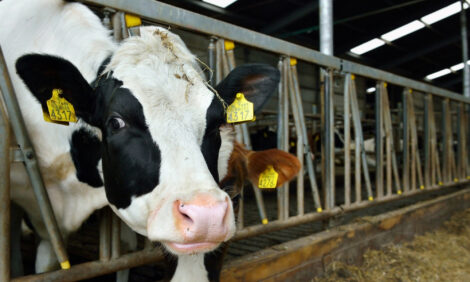



Outlook Rests on Supply Issues and Cheese Stocks
GLOBAL - Emerging markets are to remain the key drivers of a global dairy picture currently plagued by unhelpful production conditions and fears over cheese stocks.Demands for milk and its derivatives do not alter significantly in established market places such as the US and UK but big changes are expected elsewhere.
This is according to DairyCo Senior Analyst Patty Clayton who, speaking at the NFU Dairy Producer Representative Summit yesterday (Thursday), earmarked South American states, Russia, India and China as future markets that will become increasingly important in the future of world milk.
In her 2013 markets forecast, Mrs Clayton highlighted Chinese import activity. Through 2012 imports in China lifted 30 per cent with a rise of 68 per cent this January.
Urbanisation, dietary changes and income growth were stated as causes of Chinese milk uptake, while the western market was predicted to remain ‘soft’.
While the demand side of the market looks positive, current supply drivers may limit availability with the US, UK, Australia and New Zealand all experiencing weather problems.
“The UK supply picture looks to remain tight for the next quarter, there has been no grass and it’s too cold. Delayed spring plantings don’t help and margins are remaining very tight,” warned Mrs Clayton.
This situation is similar across the EU with production falling 0.5 per cent from April 2012 to February 2013. Only Poland and Germany buck the trend of main European dairy nations to experience stability in the light of weather issues and rising feed inputs.
Recent months have seen much greater production drops in New Zealand - a huge output downturn of 30 per cent following a previous record season. The outlook rests on the arrival of rain and, if a spring flush comes in the second half of the year, farmers could ‘pump out’ the milk again.
“New Zealand started the year (2012) well until the drought arrived and production fell hugely,” stated Mrs Clayton.
Similar difficulties have been experienced in Australia and the US with weather limiting grazing and feed availability.
A combination of Australian droughts and severe floods have caused pasture damage and disrupted logistical and farm operations.
Greatest turmoil was seen in January and February, although Mrs Clayton denied any significant impact on overall Australian production, stating that the last 12 months had seen a 1.1 per cent rise.
Dairymen in the US have also had ‘insufficient milk prices’ to contend with but against all the odds managed a one per cent milk production rise last year.
Highlighting the flexibility of the US milk units Mrs Clayton said: “In terms of US production, they have the ability to ramp up production if the price is right. The handling of Powder and Cheese stocks could be strategic in allowing prices to go up.”
Mrs Clayton concluded by answering queries about UK cheese stocks, a topic of huge concern in the industry. She said that Irish milk output over the first three months is 12 per cent down year on year which cause for concern for retailers.
She said that buyers' names are already on existing stocks although commercial companies do not tend to reveal quantities of stocks.
Three options are available for the UK market, according to the DairyCo expert. Firstly there is the option of putting more milk into ‘high returns and fat’.
The other two options of using up stocks and importing cheese are unlikely with Ireland and New Zealand, the UK’s main cheese suppliers, also having low stocks.
“We are going to have to pay the price to get the product,” said Mrs Clayton adding that there are no signs that wholesale prices will go down in the future.
Michael Priestley
News Team - Editor
Mainly production and market stories on ruminants sector. Works closely with sustainability consultants at FAI Farms



